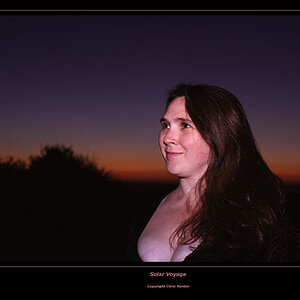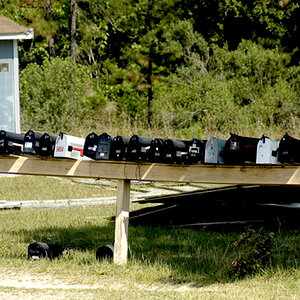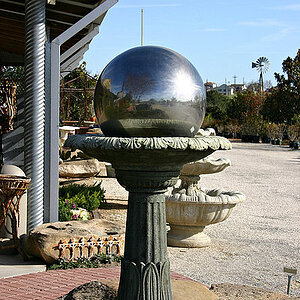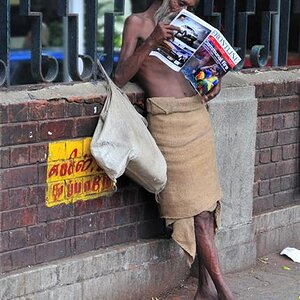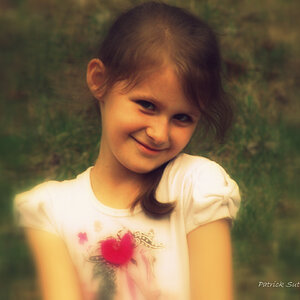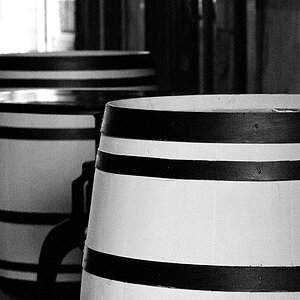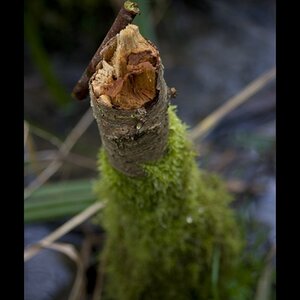skylark
TPF Noob!
- Joined
- Jan 15, 2006
- Messages
- 116
- Reaction score
- 0
- Location
- Cannock UK
- Can others edit my Photos
- Photos OK to edit
I just shot my first wedding (fanfare of trumpets and break out the valium  ) which was a wedding present for my Brother in Law and his new wife.
) which was a wedding present for my Brother in Law and his new wife.
Anyway, I shoot film - in this case 35mm- not digital so I was a little apprehensive about it all, no deleting and shooting again!
The day went quite well, a little cold for too many outdoor shots and not the most photogenic of locations for the reception, if you know what a 'miners welfare' is that is where it was held- we know our roots around here, but not too many problems.
Back to my title, I dropped the film off at my local ASDA/Walmart on the Sunday morning, 1 hour later I had 2 developed films,60 odd 6x4 prints and a CD with Hires and lo-res images, my wallet was lighter by just under £12 ($20/euro). The 'clients' were able to choose from actual prints which ones they wanted in the album and I am now in the process of using PS to crop/modify etc. prior to printing at 8x10-which looks very acceptable.
Compare this with digital, I would have had to download the images in some way to get the 'proofs' or else shown them on screen, my in laws do not have a computer. The process of sorting photographs for them would probably have taken longer.
I am doing to the CD images what a digital photographer would do anyway, so I am no worse off than they would be.
The killer of course is cost- Cost of film plus processing (additional to what a digi photographer needs to do-but assuming no proof prints were produced on digital) is around £18 ($25/euros) but the camera plus lens cost £80 ($100/euros) - how many of these events could I do before I had paid for a new digital ? (I guess around 20-30) and would the digital be 'old technology by then ?
I am not suggesting that the pro/semi pro with a Canon 1D is not making a wise investment, they would shoot film in amounts that would be colossaly expensive compared to digital, but for a reasonably competent amateur where is the benefit of digital ? --I await your responses
Anyway, I shoot film - in this case 35mm- not digital so I was a little apprehensive about it all, no deleting and shooting again!
The day went quite well, a little cold for too many outdoor shots and not the most photogenic of locations for the reception, if you know what a 'miners welfare' is that is where it was held- we know our roots around here, but not too many problems.
Back to my title, I dropped the film off at my local ASDA/Walmart on the Sunday morning, 1 hour later I had 2 developed films,60 odd 6x4 prints and a CD with Hires and lo-res images, my wallet was lighter by just under £12 ($20/euro). The 'clients' were able to choose from actual prints which ones they wanted in the album and I am now in the process of using PS to crop/modify etc. prior to printing at 8x10-which looks very acceptable.
Compare this with digital, I would have had to download the images in some way to get the 'proofs' or else shown them on screen, my in laws do not have a computer. The process of sorting photographs for them would probably have taken longer.
I am doing to the CD images what a digital photographer would do anyway, so I am no worse off than they would be.
The killer of course is cost- Cost of film plus processing (additional to what a digi photographer needs to do-but assuming no proof prints were produced on digital) is around £18 ($25/euros) but the camera plus lens cost £80 ($100/euros) - how many of these events could I do before I had paid for a new digital ? (I guess around 20-30) and would the digital be 'old technology by then ?
I am not suggesting that the pro/semi pro with a Canon 1D is not making a wise investment, they would shoot film in amounts that would be colossaly expensive compared to digital, but for a reasonably competent amateur where is the benefit of digital ? --I await your responses


 (if in doubt make a meaningless comment-see 'dumbing down')
(if in doubt make a meaningless comment-see 'dumbing down')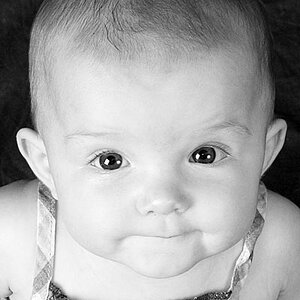
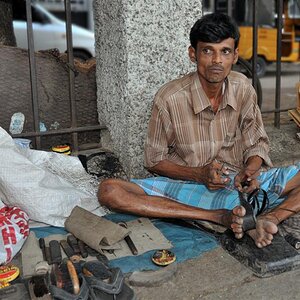
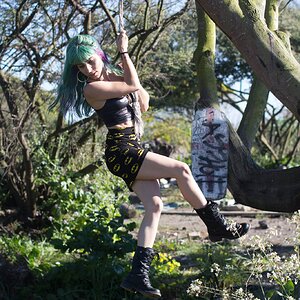
![[No title]](/data/xfmg/thumbnail/37/37102-ef61523dcb48f0bd3a761c8bb5cea767.jpg?1619737881)
